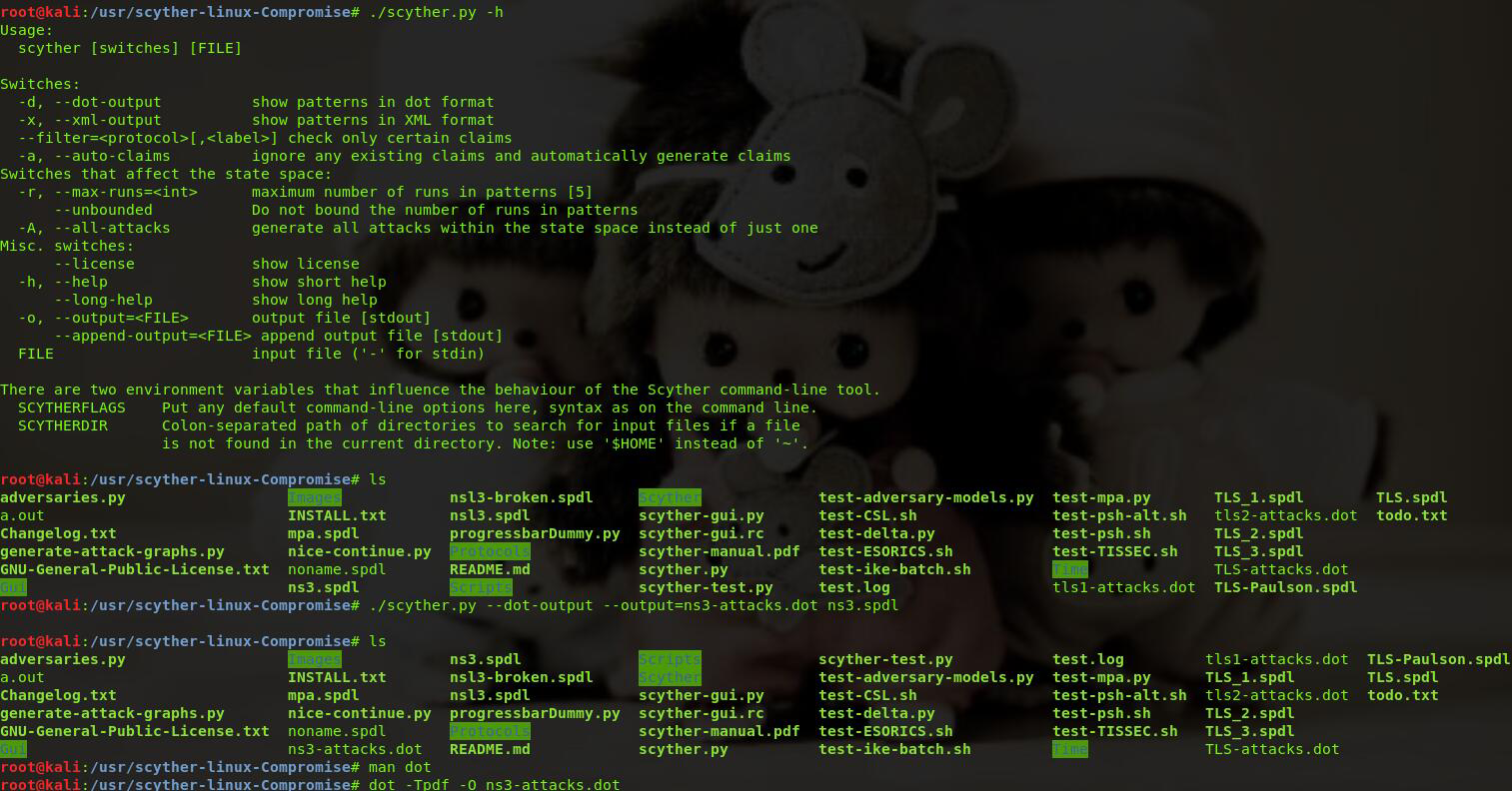Scyther攻击输出图的解释(之二)
下面对 Needham-Schroeder 协议形式化分析 的攻击输出图 做一个解释:
Needham-Schroeder使用ns3表示, ns3 协议形式化描述结果如下:
/*
* Needham-Schroeder protocol
*/
// The protocol description
protocol ns3(I,R)
{
role I
{
fresh ni: Nonce;
var nr: Nonce;
send_1(I,R, {ni,I}pk(R) );
recv_2(R,I, {ni,nr}pk(I) );
claim(I,Running,R,ni,nr);
send_3(I,R, {nr}pk(R) );
claim(I,Secret,ni);
claim(I,Secret,nr);
claim(I,Alive);
claim(I,Weakagree);
claim(I,Commit,R,ni,nr);
claim(I,Niagree);
claim(I,Nisynch);
}
role R
{
var ni: Nonce;
fresh nr: Nonce;
recv_1(I,R, {ni,I}pk(R) );
claim(R,Running,I,ni,nr);
send_2(R,I, {ni,nr}pk(I) );
recv_3(I,R, {nr}pk(R) );
claim(R,Secret,ni);
claim(R,Secret,nr);
claim(R,Alive);
claim(R,Weakagree);
claim(R,Commit,I,ni,nr);
claim(R,Niagree);
claim(R,Nisynch);
}
}
攻击输出图:
我们可以看到左边运行代理是 Agent1 代理 角色 R ,右边是运行代理是Agent2 代理 I 角色,代理Agent2 认为响应角色是信任的 Eve (所有的信息泄露,不能保证),除此之外运行的头部方框包含新生成变量值信息和局部变量 , 每一次消息发送的时候,都会被攻击者获取,在这个例子中,因为攻击者知道代理 Eve的私钥 sk(Eve) ,能够解密消息获得随机变量 ni#2的值,

通信事件 :发送事件指明一个发送消息,从上面的攻击图中可以看出,第一次发送发生在运行 2 的第一次发送事件,------》 send_1(Eve,{Agent#0, ni#2 }pk(Eve)),接受事件对应于消息的成功接受,在此次攻击中第一次接受事件 ,接收到的消息是: recv_1(Agent#0,{Agent#0,ni#2}pk(Agent#1)) ,攻击者不能预测随机变量 ni#2的值,所以只能等待 运行 2 生成 ni#2之后,代理Agent1 才能接受到消息,
在攻击输出图中,红色箭头连线表示发送消息和接受消息不匹配,我们知道攻击者在发送的消息之后构造要接受的消息,因此他必须使用发送消息的信息来构造接收到的消息。
在攻击输出图中,黄色箭头表示消息以完全相同的方式发送和接受,代理不同意 消息任意的发送,因此他被标记为 "redirect" 因此攻击者必须重定向该消息。
在攻击输出图中,绿色箭头表示收到的消息和接受到的消息完全相同,表示两个代理之间 正常的通信
注意:如果接受事件没有传入箭头,表示接受术语可以从入侵者的初始知识生成,如果角色读取仅包含代理名称的原始消息,则入侵者可以从其初始知识生成该术语。
3、使用 Scyther command-line 工具验证
一般都是使用GUI,因为简便,在使用command-line 的使用 如果Linux 系统问题会出现很多问题。 我在使用dot工具渲染输出图形的时候 报错提示出现 语法错误。(应该是渲染工具的问题)


4、高级主题



 浙公网安备 33010602011771号
浙公网安备 33010602011771号